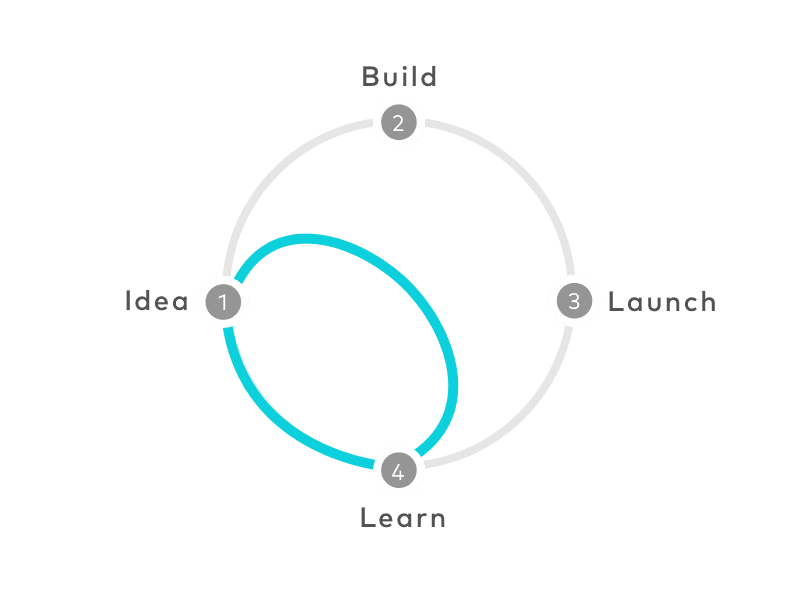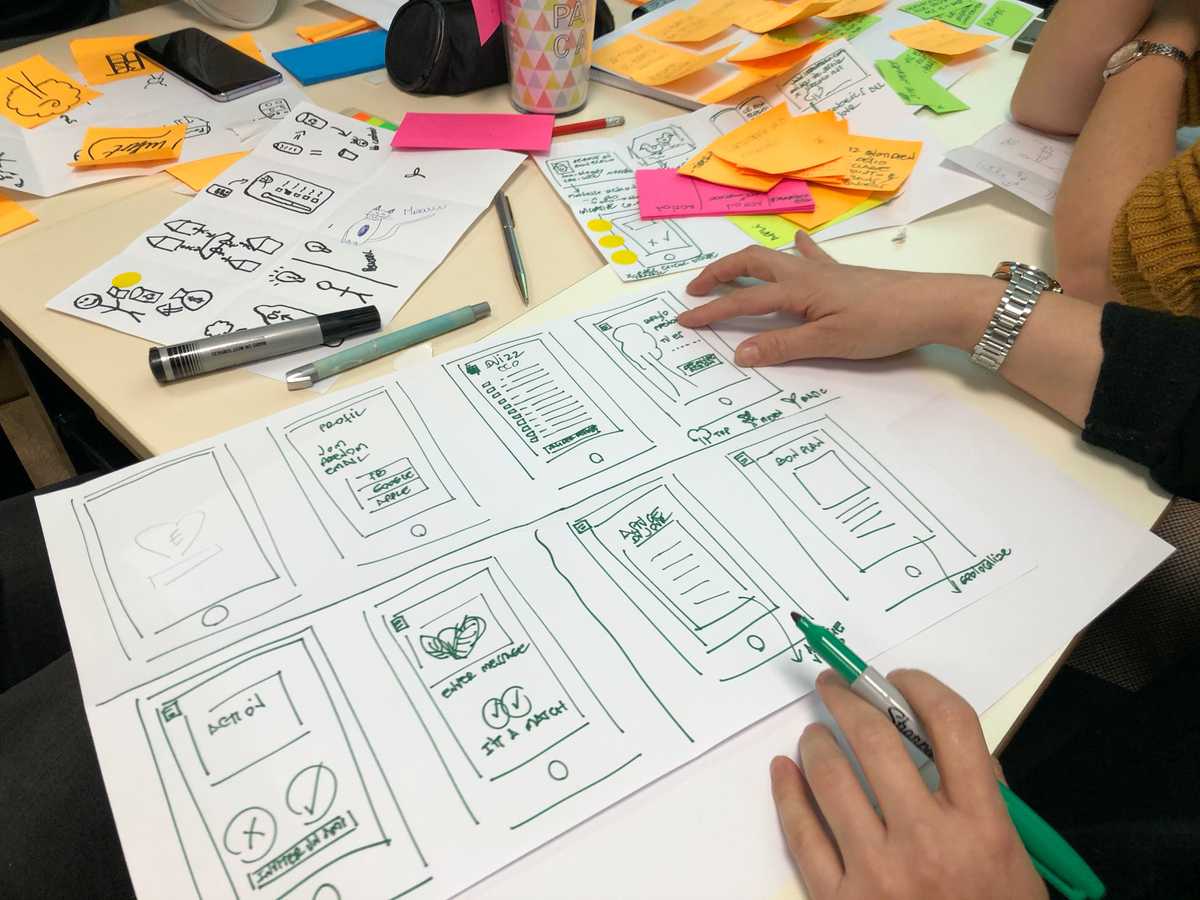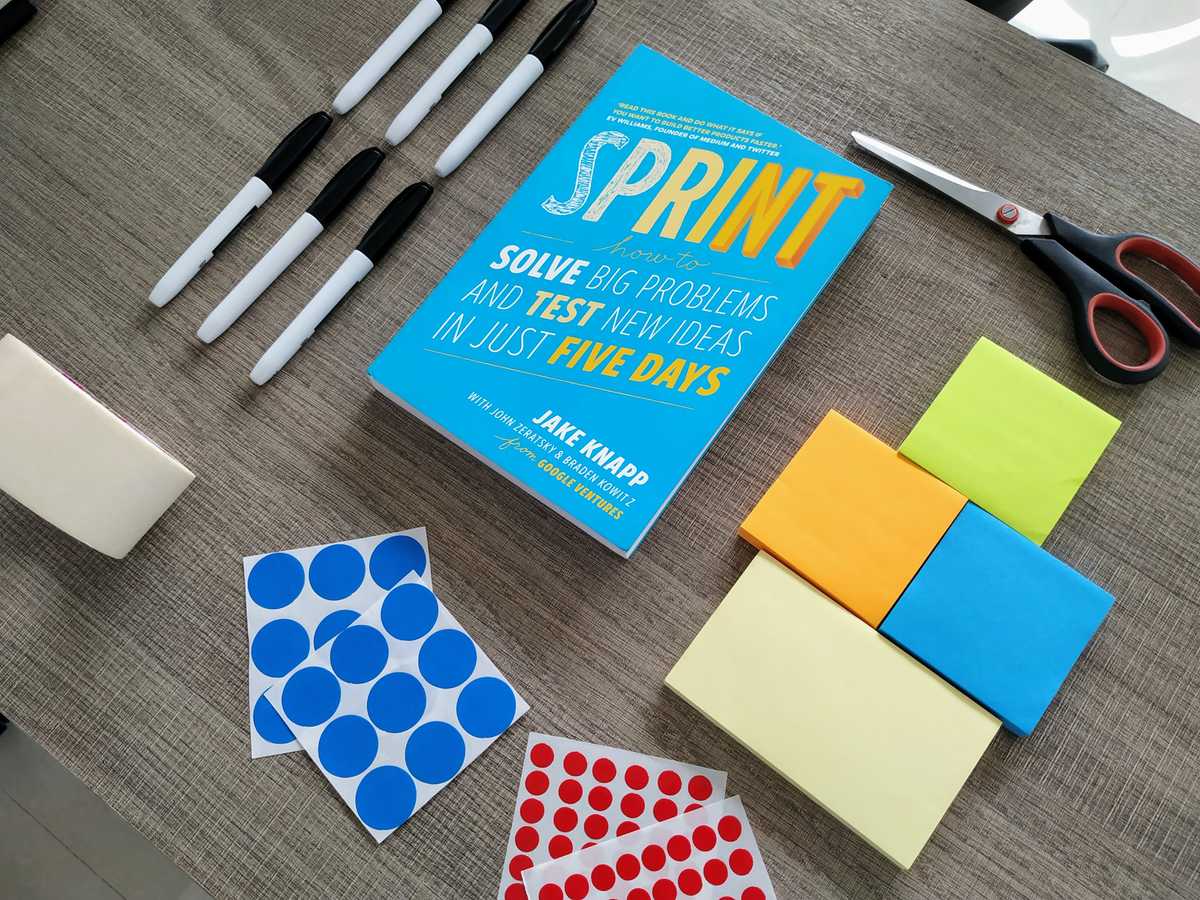Get to know all the details about what Design Sprint is, what its stages are, its advantages and how you should implement it in your company!
Overview:
- Being an agile methodology widely used around the world, knowing what Design Sprint is, and implementing it in your company, is essential for the development of products in a productive way.
- This method was developed by Google Ventures and consists of five days of studies, analysis and development to understand if the project is viable or not to be executed.
- Check out everything you need to know about the Design Sprint below!
Do you know what is Design Sprint?
With the rapid advancement of technology and digital transformation increasingly present among companies, in order to beat the competition, your customer needs to know that you can do the job.
If you are looking to develop a software project in a short amount of time, producing an MVP may not be ideal.
To try to solve this problem, the Design Sprint methodology was created so that, in a week, the company can have an exact idea of what needs to be done, what are the implementation difficulties and if it will be possible to develop the technical project.
Due to the importance of developing software and applications in record time, we have produced an article that brings all the details about what Design Sprint is, its advantages and how you can implement it in your company. Check it out below.

(Foto: Reprodução/Google Ventures)
After all, what is Design Sprint?
The Design Sprint is an agile methodology used quite frequently in software development companies.
When offering a digital transformation service to a client, it is difficult to establish deadlines for delivery, as the client will always pressure the company to have an MVP available in a shorter time.
So that developers and the company can better visualize the project, the best solution is to develop a simple prototype, since the software development process is not easy and there is no way to deliver a product overnight.
Because of this, the Design Sprint is a methodology that preaches development in five steps, done in five days. They are: Unpack, Sketch, Decide, Prototype and Test.
Within these steps – which you will see in more detail throughout the article -, it is possible to verify if the product is viable to be developed, which methods to use, if the user experience will be immersive and many other questions that can be answered.
Where did the Design Sprint come from?
Created by software developer Jake Knapp, the Design Sprint methodology was created in 2010 when the professional was part of the Google developer team.
Two years later, after the tool’s success in the software development process, Jake took the methodology to one of the Google companies: Google Ventures. Since then, several improvements have been made in order to make the Design Sprint as efficient as possible.
Currently, Google Ventures makes available on e-commerce sites a book prepared by Knapp where all the details of how Google implemented the methodology in its products and how to carry out the processes in the ideal way are pointed out.
Due to the sharing of information, today the Design Sprint is widely used by companies around the world.
Who is part of the team?
When this methodology is implemented in a company, several professionals responsible for the success of a product can be part of the sprint, which can vary from company to company.
However, what is certain is that each and every Design Sprint necessarily needs the presence of a Sprint Master.
Within the process, this professional is responsible for managing the execution of all stages of the sprint, acting independently from the others, since his only function is to organize so that everything is done correctly.
In addition to the Sprint Master, the Design Sprint needs to be composed of professionals who are responsible for the project management area – such as a Product Manager, for example -, software engineers, UX and UI designers, researchers and also Stakeholders.
In this way, all stages of the software development process are covered, making the sprint productive.

To adopt or not, that is the question…
The first step to clear this doubt is to understand well the moment in which your company finds itself. This is because, it is evident that there are projects that are impossible to be made viable in just five days.
In these cases, insisting on adopting the Design Sprint is a mistake, since the principle of the methodology will not be reached, resulting in a loss of time and low productivity of the professionals in question.
Because of this, the Design Sprint is recommended for startups that are still in the process of developing their first products, and can be an alternative to brainstorm activities.
In addition, for already established companies, the Design Sprint process can also work when deciding to develop a new project.
Thus, it is easier to visualize what can be done in the future, in which features we may have problems and also how to develop in the best possible way.
Generally, most companies focus on producing an MVP. However, using the Design Sprint methodology may be more recommended, since it is a more agile process and generates results faster.
In cases where the project scope is very closed, or very open, the methodology is also avoided, since it can take a long time to define the solutions.
What can I expect? What are the benefits for my business?
By carrying out the Design Sprint process, according to Google, you can expect much greater agility in understanding and executing the project.
This works because a series of professionals from different areas of the company will be working together in an organized way.
With this more assertive communication, iterations are more frequent and rework tends to be less than it is traditionally. Thus, after the end of the process, a prototype is developed and several tests are carried out to verify if the project is viable or not to be carried out.
In short, the Design Sprint process manages to bring greater confidence to the customer that he has chosen a company that can meet all his expectations.
In addition, of course, to facilitating the production process for developers, as it becomes easier to identify the paths to project delivery.
But how do I apply the methodology in my company?
As presented in the topic “What is Design Sprint”, this methodology consists of the elaboration of five steps in five days. See below for more details on each of these phases.
Phase 1: Unpack
Translated from English, the first phase aims to “Unpack” the information about the project in question.
On that day, the professionals involved in the project collect the project data and make a mapping in the quest to understand the problem to be solved.
It is in this phase where the alignment of expectations is done and where each stage of development of the prototype is detailed, raising possible problems.
Having this in hand, the Product Manager has his job made easy and we can move on to the next phase of the Design Sprint.
Phase 2: Sketch
On the second day, Phase Sketch arrives with the aim of bringing debates between the professionals involved.
In this way, after a cold analysis of the project, each development area is able to point out solutions to the problems encountered and suggestions on how the process can improve.
At the end of the stage, it is time for all professionals to get together to the point where ideas are exposed. With this, the entire team stays on top of what each one has prepared throughout the day.
Phase 3: Decide
Then it’s time to make the main decisions. The third stage is called Decide and is the most critical (and important) day of the Design Sprint.
With all the ideas in hand, the team meets to define what will be done in the prototype and if it will be possible to develop all the ideas in the correct time of the sprint. Which brings us to the next step.
Phase 4: Prototype
The fourth stage of the development process is the beginning of project prototyping. At the end of the previous phases, all ideas have already been discussed and listed in a backlog of priorities.
That way, prototype developers are able to stay organized throughout the development day.
However, it is worth remembering that the objective is not to deliver the solution ready for the customer, but a model that is quite faithful.
Phase 5: Test
The last and decisive step of the creative process is the testing of this prototype. On the last day of the sprint, professionals submit a series of tests, measurements and analysis on what has been developed and whether or not it is in line with the client’s ideas.
As a result, all parties learn mutually, meaning that the next sprint no longer has to start from scratch, as everyone involved has already acquired knowledge about this type of solution.
On the other hand, the prototype, if it is in agreement with the customer, moves on to the development phase where all the features will be fully implemented.

Design Sprint vs. Design Thinking
Along the search for knowledge, many people may find these terms on the web and not fully understand what Design Sprint is and what the differences are to Design Thinking.
Basically, these two concepts are part of different processes within a software design and development company.
As presented in the topic above, the Design Sprint is composed of five fundamental steps for the production of a prototype about the project that needs to be developed.
These steps are fixed and need to be accomplished step-by-step in a short amount of time for them to really have value.
The concept of Design Thinking is considered a development philosophy. In other words, it is the approach that the team will take to develop the product properly, always with a better user experience in mind.
While the Design Sprint is a recipe to be followed by the team, the concepts of Design Thinking provide tools for each of those involved in the project, all to bring a more accessible, complete and dynamic interface to the end user.
In an ideal world, it is recommended that these two concepts go together because both are focused on innovation, and facilitate processes of convergence and divergence of ideas.
Conclusion
Now it’s easier to understand what Design Sprint is, right?
Trusting a company that has this culture of agile development is essential for your business to grow exponentially.
Here at X-Apps, our team of specialists works intensively in the search for the solution you need, having several successful cases, whether in mobile, web development or systems updating.
So, if you think about developing a software, get in touch with us.
We have the right solution for what your company needs.
Source: https://www.x-apps.com.br/o-que-e-design-sprint
